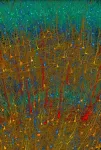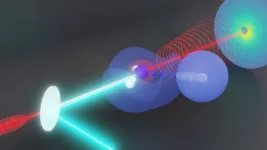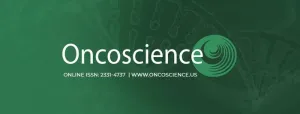(Press-News.org) The human brain is a tangled highway of wires emanating from nearly 100 billion neurons, all of which communicate across trillions of junctions called synapses. “Depressingly complex,” Harvard neuroscientist Jeff Lichtman calls it. The only way to understand this highway, says Lichtman, is to create a map.
Lichtman, the Jeremy R. Knowles Professor of Molecular and Cellular Biology, has spent several decades generating such maps, and in doing so has pioneered a field known as “connectomics.” His ultimate goal is a whole-mammalian brain map accounting for every neural connection, a so-called “connectome.”
Now, Lichtman and colleagues are embarking on a critical new step of that journey by seeking to capture synapse-level connectome data from a mouse brain at unprecedented clarity and resolution.
Lichtman and partners including Princeton University, MIT, Cambridge University and Johns Hopkins have received $30 million from the National Institutes of Health and an additional $3 million from Harvard and Princeton toward the goal of reconstructing, for the first time, all the neural wiring inside a mouse brain. They’ll prove the feat possible by first imaging a 10 cubic-millimeter region in the mouse hippocampal formation, the portion of the brain responsible for memory consolidation, spatial navigation, and other complex tasks.
Like the Human Genome Project cataloged every human gene and its unique DNA sequence, Lichtman’s connectome, which he has worked on since arriving at Harvard in 2004, would be a comprehensive diagram of every neural connection in the brain.
Creating a connectome of the human brain could lead to new approaches in diagnosing and treating disorders of the brain, from autism to schizophrenia. Scientists suspect these diseases are “connectopathies” — subtle miswirings that no currently available brain scans can detect.
“Connectomics is the only pathway,” said Lichtman, an affiliate of Harvard’s Center for Brain Science. “If we get to a point where doing a whole mouse brain becomes routine, you could think about doing it in say, animal models of autism. There is this level of understanding about brains that presently doesn’t exist. We know about the outward manifestations of behavior. We know about some of the molecules that are perturbed. But in between, the wiring diagrams, until now, there was no way to see them. Now, there is a way.”
The National Institutes of Health awarded new recipients of the Brain Research Through Advancing Innovative Neurotechnologies® Initiative, or BRAIN Initiative, funding in early September. The Harvard team is being funded through the BRAIN Initiative Connectivity Across Scales network, aimed at developing research capacity and technical capabilities for creating wiring diagrams of whole brains.
“Current techniques lack either the resolution or the ability to scale across and map out large regions of the entire brain, information that is essential for unraveling the mysteries of this incredible organ,” said John Ngai, director of the BRAIN Initiative. “Following years of careful planning and input from the scientific community, BRAIN CONNECTS — which represents our third, large-scale transformative project — aims to develop the tools needed to obtain brain-wide connectivity maps at unprecedented levels of detail and scale.”
The mouse brain is, of course, much smaller than a human’s, but when looking at individual neurons, synaptic vesicles and glial cells, “you can’t tell the difference,” Lichtman said. “At the level of cells and synapses, all mammalian brains are basically the same.”
Given recent advances in computing and data processing, and prior work by Lichtman and others — including Professor Florian Engert in molecular and cell biology — on the brains of zebrafish and fruit flies, achieving a mouse brain map has become more feasible and would serve as an early proving ground for imaging the human brain. Lichtman and colleagues urged collective efforts toward the lofty goal of a mouse brain connectome in a 2020 opinion piece titled “The Mind of a Mouse.”
The researchers will apply biological imaging techniques Lichtman and colleagues have invented over the course of several decades to achieve their goals. For the NIH project, they will employ a two-tiered system. First, two 91-beam scanning electron microscopes, one at Harvard and one at Princeton, will capture images of thin sections of the mouse hippocampal formation. The surface of each section will then be etched away with an ion beam just a few nanometers at a time, and the imaging process will be repeated until the entire volume is viewed. A team at Google Research will computationally extract the resulting wiring diagram with machine learning.
The team expects to generate about 10,000 terabytes of data for their 10-square-millimeter mouse brain section; 50 times that amount of data would be generated for a whole mouse brain. Over the first half of their five-year project, the team expects to generate up to 50 terabytes of data per day.
Lichtman’s team has worked with Google over the last several years on image processing techniques that allow them to make sense of large amounts of data quickly. Engineers led by grant co-investigator Viren Jain will apply artificial intelligence algorithms to these brain images to categorize and color-code nerve cells and synapses. Google will also help publicly share this enormous brain map.
“We plan on using our experience with computational reconstruction and analysis of large-scale electron microscopy data, along with Google’s highly scalable data processing infrastructure, in order to enable mouse connectomics at an unprecedented scale,” said Google’s Jain. “We have worked closely with Jeff’s lab over five years, and this collaboration has been highly successful in pushing the frontiers of data-intensive neuroscience.”
The research is supported by the NIH BRAIN Initiative under award number 1UM1NS132250-01. Lichtman is involved with another BRAIN CONNECTS grant awarded by the NIH, which is led by Professor of Physics Aravinthan D.T. Samuel and is aimed at developing a rapid-imaging strategy for connectomics. More information on other awardees.
END
Human brain seems impossible to map. What if we started with mice?
Project seeks to create first comprehensive diagram of every neural connection
2023-10-06
ELSE PRESS RELEASES FROM THIS DATE:
Study validates pyrvinium as treatment to prevent stomach cancer
2023-10-06
A study published Oct. 4 in Gastroenterology further validates that pyrvinium, a drug that has been used for decades for intestinal pinworms, can be repurposed as a preventative treatment for stomach cancer.
Eunyoung Choi, PhD, assistant professor of Surgery, and colleagues have demonstrated in human organoids and mouse models that the drug induces cell death in precancerous lesions. Pyrvinium blockades both the MEK/ERK and STAT3 signaling pathways. In another study she led, which was published last year in Gastroenterology, the researchers demonstrated that pyrvinium blocked regeneration of dysplastic ...
Researchers catch protons in the act of dissociation with SLAC’s ultrafast 'electron camera'
2023-10-06
Scientists have caught fast-moving hydrogen atoms – the keys to countless biological and chemical reactions – in action.
A team led by researchers at the Department of Energy’s SLAC National Accelerator Laboratory and Stanford University used ultrafast electron diffraction (UED) to record the motion of hydrogen atoms within ammonia molecules. Others had theorized they could track hydrogen atoms with electron diffraction, but until now nobody had done the experiment successfully.
The results, published October 5 in Physical ...
Scientists investigate Grand Canyon's ancient past to predict future climate impacts
2023-10-06
The Grand Canyon’s valleys and millions of years of rock layers spanning Earth’s history have earned it a designation as one of the Seven Natural Wonders of the World. But, according to a new UNLV and University of New Mexico study, its marvels extend to vast cave systems that lie beneath the surface, which just might hold clues to better understand the future of climate change — by studying nature’s past.
A research team led by UNLV paleoclimatologist and Professor Matthew Lachniet that included the University of New Mexico Department of Earth & Planetary Sciences Distinguished Professor Yemane Asmerom and Research Scientist Victor Polyak and other ...
ESMO Congress 2023
2023-10-06
Lugano, Switzerland, 6 October 2023 – Under the promise to “Disseminating innovative research for optimal cancer care” as this year’s tagline reads, the ESMO Congress 2023 will be held in Madrid between 20-24 October 2023 with a virtual component to allow as many people as possible to attend.
From a keynote lecture pinpointing the hallmarks of cancer in the current year through the reinforced commitment towards more academic input in the drug development process for better cancer care, and then further down to the dramatic scenarios brought by the too many situations of crisis in the world which have an unbearable impact ...
ORNL, University of Texas Rio Grande Valley partner to provide students research, mentorship opportunities
2023-10-06
The Department of Energy’s Oak Ridge National Laboratory and the University of Texas Rio Grande Valley, known as UTRGV, have signed a memorandum of understanding to strengthen research cooperation and establish a collaborative program for undergraduate research and education, further cementing relationships and collaboration between the lab and minority-serving institutions. This partnership builds a pathway for students to pursue science, technology, engineering and mathematics, or STEM, careers through DOE by complementing ...
Lurbinectedin for Neuroendocrine Tumors (NETs)
2023-10-06
“Several ongoing trials hope to further elucidate the role of lurbinectedin in highgrade neuroendocrine neoplasms [...]”
BUFFALO, NY- October 6, 2023 – A new editorial paper was published in Oncoscience (Volume 10) on June 14, 2023, entitled, “Lurbinectedin, a DNA minor groove inhibitor for neuroendocrine neoplasms beyond small cell lung cancer.”
In their new editorial, researchers Deepak Bhamidipati and Vivek Subbiah from the Sarah Cannon Research Institute discuss lurbinectedin as a method to treat neuroendocrine tumors (NETs). NETs encompass a variety ...
Clinical trial reveals benefits of inhaled nitric oxide for patients with respiratory failure due to COVID-19 pneumonia
2023-10-06
Key Takeaways
Researchers have posted the results of a multisystem phase II clinical trial of patients with COVID-19 and respiratory failure
Patients who received inhaled nitric oxide had improved blood oxygen levels and fewer risks of long-term sensory and motor neurologic symptoms
They also experienced a faster reduction of viral load in sputum and blood
BOSTON – Inhaled nitric oxide gas widens blood vessels in the lungs and is used to treat severe cardio-pulmonary conditions in newborns and adults.
A recent multicenter international ...
nTIDE September 2023 Jobs Report: Employment trend holds steady at historic highs through early autumn for people with disabilities
2023-10-06
East Hanover, NJ – October 6, 2023 –The labor force participation and employment-to-population ratio have held relatively steady throughout the summer and into the fall for people with disabilities, while percentages for people without disabilities may have maxed out at their pre-pandemic baseline, according to today’s National Trends in Disability Employment – semi-monthly update (nTIDE), issued by Kessler Foundation and the University of New Hampshire’s Institute on Disability (UNH-IOD). In comparison, the employment-to-population ratio for people without disabilities remained flat with no change, while ...
Kidney disease gene also has a protective mutation
2023-10-06
African Americans have long been known to be at increased risk of kidney disease due to a dangerous genetic mutation that creates a hole in the kidney cells, but Vanderbilt University Medical Center (VUMC) researchers have now discovered a protective genetic mutation that covers the hole to eliminate the risk.
The findings on the apolipoprotein L1 (APOL1) gene, published today in the Journal of the American Society of Nephrology, could have immediate and broad implications for kidney health because people with both the disease-causing and protective mutation are not at increased risk.
“Our team discovered ...
Aston University offers talented Indian graduates opportunity to study for Masters degrees
2023-10-06
Aston University, UK, is offering a group of highly talented graduates of Symbiosis Institute of Technology (SIT), India the opportunity to study for a Masters degree.
The two institutions have signed a progression agreement which is designed to make it easier for top SIT graduates to apply for courses at Aston University.
The Aston-SIT partnership has been developed from the support of the British Council via its going global partnerships exploratory grant scheme. The areas of study cover a wide range of MSc programmes in engineering, physical sciences and business studies.
Aston University is in Birmingham, ...
LAST 30 PRESS RELEASES:
Interaction of climate change and human activity and its impact on plant diversity in Qinghai-Tibet plateau
From addressing uncertainty to national strategy: an interpretation of Professor Lim Siong Guan’s views
Clinical trials on AI language model use in digestive healthcare
Scientists improve robotic visual–inertial trajectory localization accuracy using cross-modal interaction and selection techniques
Correlation between cancer cachexia and immune-related adverse events in HCC
Human adipose tissue: a new source for functional organoids
Metro lines double as freight highways during off-peak hours, Beijing study shows
Biomedical functions and applications of nanomaterials in tumor diagnosis and treatment: perspectives from ophthalmic oncology
3D imaging unveils how passivation improves perovskite solar cell performance
Enriching framework Al sites in 8-membered rings of Cu-SSZ-39 zeolite to enhance low-temperature ammonia selective catalytic reduction performance
AI-powered RNA drug development: a new frontier in therapeutics
Decoupling the HOR enhancement on PtRu: Dynamically matching interfacial water to reaction coordinates
Sulfur isn’t poisonous when it synergistically acts with phosphine in olefins hydroformylation
URI researchers uncover molecular mechanisms behind speciation in corals
Chitin based carbon aerogel offers a cleaner way to store thermal energy
Tracing hidden sources of nitrate pollution in rapidly changing rural urban landscapes
Viruses on plastic pollution may quietly accelerate the spread of antibiotic resistance
Three UH Rainbow Babies & Children’s faculty elected to prestigious American Pediatric Society
Tunnel resilience models unveiled to aid post-earthquake recovery
Satellite communication systems: the future of 5G/6G connectivity
Space computing power networks: a new frontier for satellite technologies
Experiments advance potential of protein that makes hydrogen sulfide as a therapeutic target for Alzheimer’s disease
Examining private equity’s role in fertility care
Current Molecular Pharmacology achieves a landmark: real-time CiteScore advances to 7.2
Skeletal muscle epigenetic clocks developed using postmortem tissue from an Asian population
Estimating unemployment rates with social media data
Climate policies can backfire by eroding “green” values, study finds
Too much screen time too soon? A*STAR study links infant screen exposure to brain changes and teen anxiety
Global psychiatry mourns Professor Dan Stein, visionary who transformed mental health science across Africa and beyond
KIST develops eco-friendly palladium recovery technology to safeguard resource security
[Press-News.org] Human brain seems impossible to map. What if we started with mice?Project seeks to create first comprehensive diagram of every neural connection








